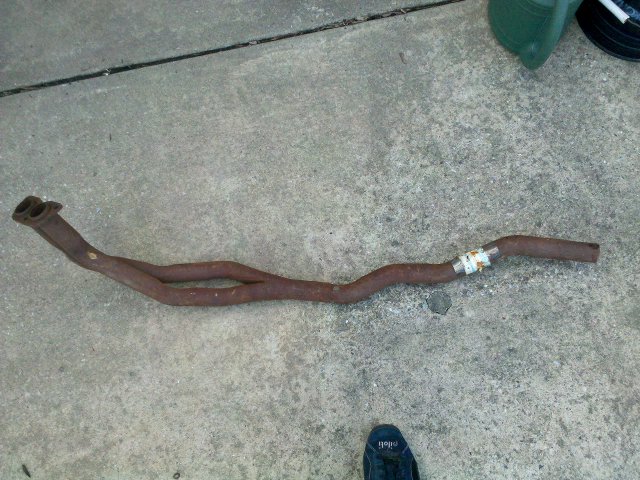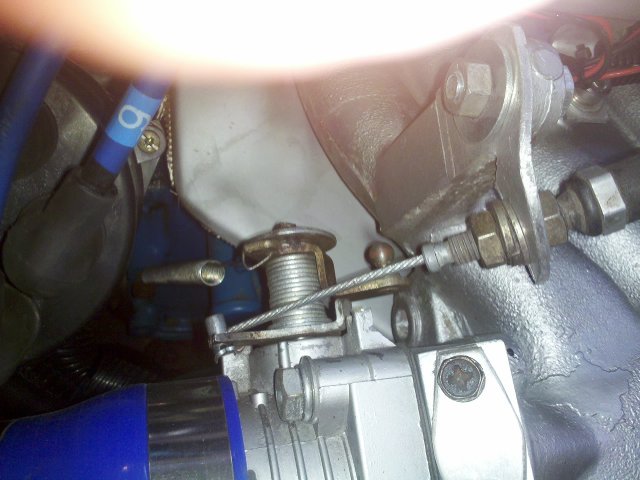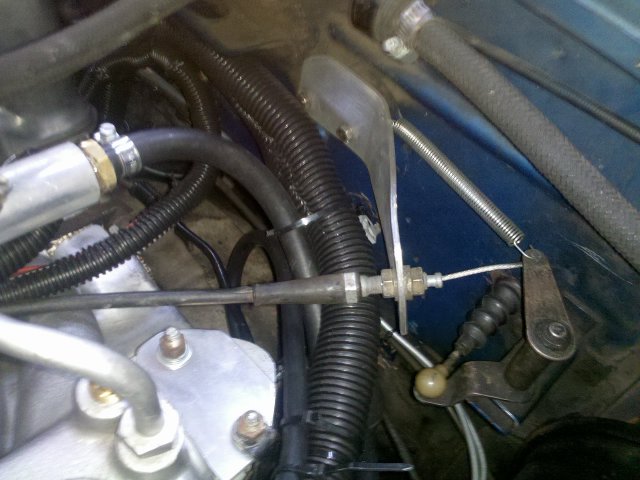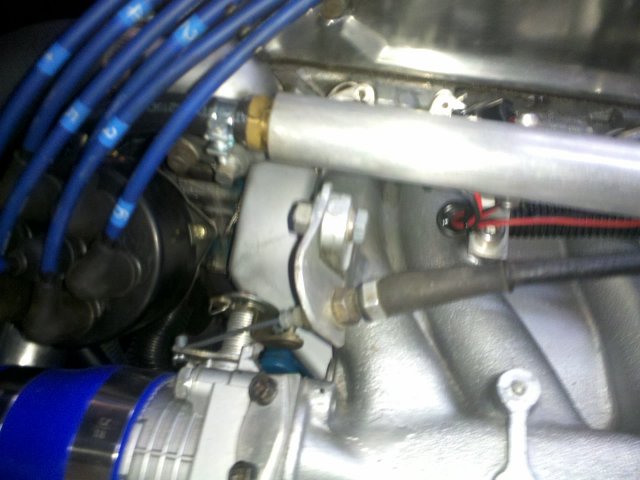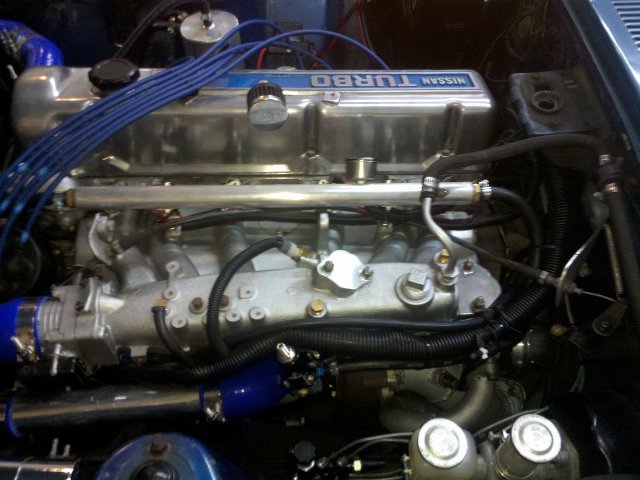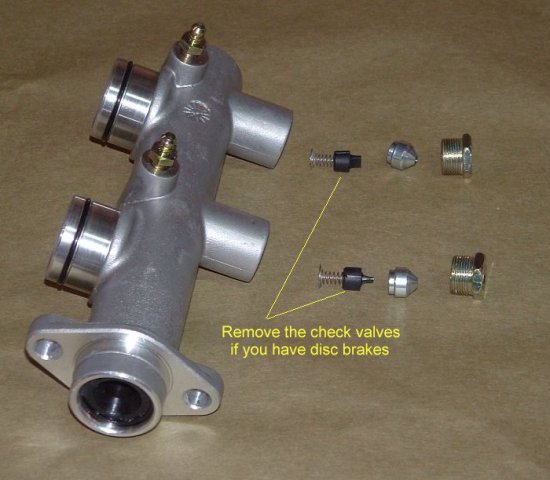-
Posts
224 -
Joined
-
Last visited
Content Type
Profiles
Forums
Blogs
Events
Gallery
Downloads
Store
Everything posted by Cannonball89
-
Sounds like an electrical problem. Check to make sure that your alternator belt is really tight. When I first did my turbo swap, the alternator belt was slipping under boost and making the car cut out. The datalogs revealed that, when the belt started slipping it the voltage would drop to below 11V. Also make sure that your battery is in good shape. The stalling after cranking could be due to the battery being too tired. The hot fuses would indicate low voltage as well. On my 240z I actually had to run a jumper directly from the alternator + to the battery +, but your 280z wiring is probably better and this might not be nessesary. So measure some voltage readings, check that alternator belt, and get that battery tested. EFI does not like low voltage!
-

Turbine Housing and Wastegate Porting
Cannonball89 replied to Cannonball89's topic in Turbo / Supercharger
Just wanted to update this thread, I tested the car with a 15PSI spring in the wastegate, and saw a maximum boost of 17PSI at the top end of 3rd gear. I will probably be at the dragstrip next Saturday and be able to datalog a run through 4th gear, but for now I am calling this a success, because before I ported the wastegate opening, I was seeing over 20PSI at the top of 3rd gear with a 10PSI spring in the wastegate. One other thing I changed was to move the source for the vac/boost line going to the wastegate from the manifold to the compressor outlet. I might move it back to the manifold in the future though, I have noticed that it keeps the wastegate open on lift throttle (no vacuum pulling the wastegat shut) and that cracking pressure seems to be much lower, I can hear the wastegate start to open by about 5PSI. In regards to the control methods we have been discussing above, this product from Turbosmart seems to be the closest thing to what we were discussing, but it isn't quite the same principle: http://www.jscspeed.com/catalog/Universal_Parts/Universal_Blow_Off_Valves/Turbosmart_Electronic_Blow_Off_Valve_Controller.html This allows you to open the blow off valve as a part of the boost control scheme, opening at a certain pressure to prevent overboost, which is in keeping with what we have been discussing, but it doesn't seem to offer the ability to open the blow off valve at low RPM surge conditions to help the turbocharger spool faster and keep right of the surge line on the maps. Basically the only controllers I have been able to find on the web from industrial compressor companies that are advanced enough to do that cost between $5,000-$10,000 and are as big as a suitcase. Tony, did that guy with the Z32 ever tell you what kind of controller he is using? I am really curious to know. -
Wow. Reading the whole internet is quite an accomplishment! But I think the best idea is in this thread, move the engine back an inch. There is room in the engine bay.
-

Anyone using the new firmware supporting 360 deg optical wheels?
Cannonball89 replied to FricFrac's topic in MegaSquirt
Hmmmmmm.... Filing a longer slot into one of the six inner slots on an 82-83 Turbo CAS.... sounds tempting. But I just bought a trigger wheel from DIY for my L28. So now, there are two options for running sequential fuel and spark on an L28 using the stock CAS without mounting a trigger wheel onto the crank pulley, and when I completed my MS3 build about a year ago there were approximately.... ZERO! Damn technology changing so fast. It's hard to keep a 40 year old car up to date these days lol. -
Yes you can make them yourself, BUT you must use FUSIBLE LINK wire. It is different than usual wire, as it is designed to burn quickly at a certain amperage, thus opening the circuit. Regular wire will have the insulation burn off when a short occurs, but will not burn the copper wiring, which means that whatever component is on that circuit will likely burn up. Most autoparts stores sell fusible link wiring, but it is getting harder to find as most modern cars use fuses rather than fusible links. Converting to a fusebox to replace the fusible links is easy, well documented, and highly recommended by me. Not sure if that might be what is "preventing your 280z from starting". That is a pretty vague description of the problem. But looking at the condition of some of those links it may be possible that one or more has lost continuity or is causing excessive resistance.
-
Aluminzed steel, aluminum sheet, aluminized heat tape, etc. There are numerous ways to shield the fuel rail and the gas tank. None probably work as well as asbestos, but that is hard to come by these days. You can't escape the fact that the intake manifold and fuel rail sit directly on top of the exhaust manifold (unless you swap in a different motor) so you just have to do what you can. Wrapping the exhaust manifold or header, using the factory heat shield or a custom one, and using heat tape or wrap on the fuel rail and maybe even the bottom of the intake manifold will help a lot. Also check to see how close your exhaust system comes to the gas tank. If it is pretty close, you may want to put some shielding their too. And the same goes for if your exhaust system comes close to the fuel lines in the transmission tunnel.
-
Sounds like a fuel temperature problem to me. I bet that when you noticed AFR going lean either: A.) The fuel tank had gone from fairly full to almost empty Or B.)The the car had sat for a while allowing the fuel rail to heat soak. As gasoline heats up it expands (becomes less dense) so even though the volume of fuel injeced at each squirt remains the same, the mass of fuel varies based on temperature. Solutions would be better heat sheilding around fuel lines and tank, or a returnless system like modern cars have. Id kind of like to see a fuel temperature compensation feature be added to future megasquirt codes, increasing/decreasing injector PW based on fuel temperature.
-
Beautiful car man. That is the same color as mine, and pretty soon I'm going to have those same wheels too! Those pictures are making me want to take my car to a body shop and get it painted right now, because that car in that color is so beautiful when the paint is perfect. Mine is pretty rough. You should have a fairly easy time getting it to run properly. Most of us start with a basket case. Your car just has a couple of minor flaw it sounds like.
-
Yea bluestag said that too. I don't know what it is then. I doubt its part of a header, but possible.
-

SU swap, now hits wall at 5k in gear
Cannonball89 replied to PurePontiacKid's topic in Trouble Shooting / General Engine
So far the only empirical evidence we have is that it is shooting fuel out of the float bowls when free revving the engine. If I were you I would fix whatever is causing that before you hydrolock your motor at WOT. -
There she is. The sticker just shows the company who imported it. It is in good condition, no pitting. PM me if you want to talk price. When I bought my car it had headers on it so I assume that someone bought this piece planning on using it then just decided to use headers instead. I have a stock exhaust manifold too.
-

SU swap, now hits wall at 5k in gear
Cannonball89 replied to PurePontiacKid's topic in Trouble Shooting / General Engine
Fuel shooting out of the carb vent would indicate that the float isn't sealing the float bowl properly, or that the fuel pressure is rising too high at high RPM and overwhelming the float. Could be that your car is bogging from going way too rich. Are you using your FPR as a rising rate regulator or just as a fixed pressure regulator? Are you using the stock carburetor fuel rail (the one that has the little pin hole in the return portion that acted as the factory FPR) or some other kind of fuel rail? Pictures here would help. And just to make sure it's not an ignition problem, what impedance is your coil? If it is 3 ohms, then you cannot have a ballast resistor. -
I would just buy some headers if I were you. You've struggled long enough with the stock exhaust lol. But I do have what I think is a New Old Stock downpipe for a 240z. It has two pipes that merge to one, and a flange that meets the manifold. It stil has a Nissan sticker on it I think so it has never been used. Just some surface rust. If interested I can send you some pictures and we can talk price and I'll get a shipping estimate to LA.
-

Need help with dragging rear disc brakes.
Cannonball89 replied to RebekahsZ's topic in Brakes, Wheels, Suspension and Chassis
Stock master cylinders only had it in the rear circuit for the drums. The one in the picture I posted is an aftermarket wilwood 1" master that I used just because I didn't have any good pics of a stock one. -

Need help with dragging rear disc brakes.
Cannonball89 replied to RebekahsZ's topic in Brakes, Wheels, Suspension and Chassis
I wonder if someone fitted a 15/16 master cylinder to a car with drums and added the check valve themselves? -

Need help with dragging rear disc brakes.
Cannonball89 replied to RebekahsZ's topic in Brakes, Wheels, Suspension and Chassis
Glad you got it fixed. And I think that the discoloration of the fluid is normal. The fluid in my car turned a brownish-black color too until I put a new master cylinder, rebuilt calipers, a new proportioning vavle/distribution block, and new brake lines. So in other words, unless your going to install all new brake hardware, you can expect discoloration. Plus one for ATE super blue, it is what I use in the racecar. -

Fuel tank wont fill up full
Cannonball89 replied to disepyon's topic in S30 Series - 240z, 260z, 280z
It might be the vent hose on the top of the tank is clogged. If that's the case, the air can't escape once the fuel level rises above where the filler neck goes into the tank, and the gas will come up the filler neck and shut off the pump before the tank is full. -
1. Blocking off the Vac Advance will make it "pop" under decel more. Not really a performance mod, but can sound cool with headers and a free flowing exhaust. It will also hurt economy under cruise conditions. 2. I'm pretty sure you are right about what the green wire connects to. Just look to see which one of the temp sensors doesn't have a connector attached to it, that if probably where that wire goes! 3. The only reason I can think of someone putting a resistor inline like that would be some kind of experimental way to enrich or lean the mixture. It looks like it might be in the wire that goes to the coolant temp sensor. Conclusion: Fix everything like that you find. None of that crap is buying you any extra power or fuel economy or driveability.
-

280zxt N42 intake throttle cable conversion
Cannonball89 replied to J240ZTurbo's topic in Fabrication / Welding
Ok that should give you an idea. I just had to drill a hole in each end of the cable. The end at the throttle body has a cotter pin in it to hold it in place, and the end at the linkage on the firewall has the spring holding it in place. I used a return spring attached to the throttle body and going down and mounting to the engine block using an unused bolt hole and another at the linkage to help it return closed faster. The two brackets were pretty easy to make. And the best thing was it was free, by cannibalizing the cruise control module off of a 280zx. The return spring setup was missing on the 240sx throttle body I used, that's why I had to use the springs. The only reason I did a throttle cable in the first place was because the stock linkage hit my fuel rail. But im pleased with the result. No sticky linkage bind anymore either. -

280zxt N42 intake throttle cable conversion
Cannonball89 replied to J240ZTurbo's topic in Fabrication / Welding
I used the cable off of the cruise control module of a 280zx for my throttle cable. It is the perfect length to go between the throttle body (240sx 60mm in my case, but the stock Datsun throttle body has the linkage mount in the same place) and the last piece of mechanical linkage that mounts on the firewall. I will post some pictures later when I get a chance. It was a pretty simple setup. I just had to make a couple of custom brackets and intall return springs. None of it was very hard though, just simple aluminum bended brackets and off-the-shelf return springs from the "HELP" section at Advance Auto. -
We use those solex locks at walmart to lock up the expensive things in electronics. They're not that great in my opinion. The little nub on the key wears down really fast and then they become hit or miss as to whether or not they will lock/unlock reliably. Plus whenever somebody misplaces the keys im usually able to break into the cases anyway by twisting the whole lock assembly with vicegrips.
-
Yea scratch that idea. Curved runners over the intake would make for a torqy little motor too. I met a guy at carlisle last year with a N/A fairlady that had the intake manifold with the 180 degree curved runners. It was the P65 intake. He said it pulled a lot harder at low rpm than the standard straight runner manifolds.
-

Need help with dragging rear disc brakes.
Cannonball89 replied to RebekahsZ's topic in Brakes, Wheels, Suspension and Chassis
Oh, he mentioned that he "verified stock master cylinder pushrod" so I assumed he meant that he had the 240z master. And yes, a car with disks like the 280zx would not likely have residual pressure valves. -
If you want to do something "outside the box", a cool project I think would be to have a full equal length header made (or make them yourself) that wraps down under the oil pan, and have them come up and out on the other side of the engine with a T3 or T4 flange at the secondary collector. This would get all of that heat away from the intake manifold, which is the biggest problem I have right now using the stock turbo manifold. The heat soak after 5-15 minutes is just vicious in my car in the summer. Plus having equal length headers going to the turbo can't hurt performance either, although response time may suffer slightly, but I doubt it would be too noticeable. Having a smoother less turbulent flow going into the turbo would probably offset the extra distance between the turbo and the exhaust valves *I think*.
-

Need help with dragging rear disc brakes.
Cannonball89 replied to RebekahsZ's topic in Brakes, Wheels, Suspension and Chassis
Stock 240z master cylinders have a residual pressure valve in the rear circuit. This was installed to keep slight pressure against the drum brakes at all times. When you do a rear disk brake swap, the residual pressure valve must be removed, or you will have the slight dragging that you are describing. The valve is in the assembly under the rear reservoir. Here is a picture from zcarnut's 1" master cylinder thread. The ones in the stock 240z master cylinder look similar and are in the same place, but there is only one in the rear circuit, not the front. I hope this solves your problem, and while your at it, you may want to make sure that the handbrake master cylinder you installed doesn't have a residual pressure valve too. P.S: You may want to think about upgrading to the 1" master or at least a 15/16" master. I have 280zx rear disks on my 240z which are a pretty similar piston size to the maxima's you have, and with the stock 7/8" master the brakes are very "squishy". I liked the firm pedal feel that the drums had, but the disks stop much better now that I have dialed them in with a prop valve. A larger master would bring back the firm pedal feel that the drums had I think.

